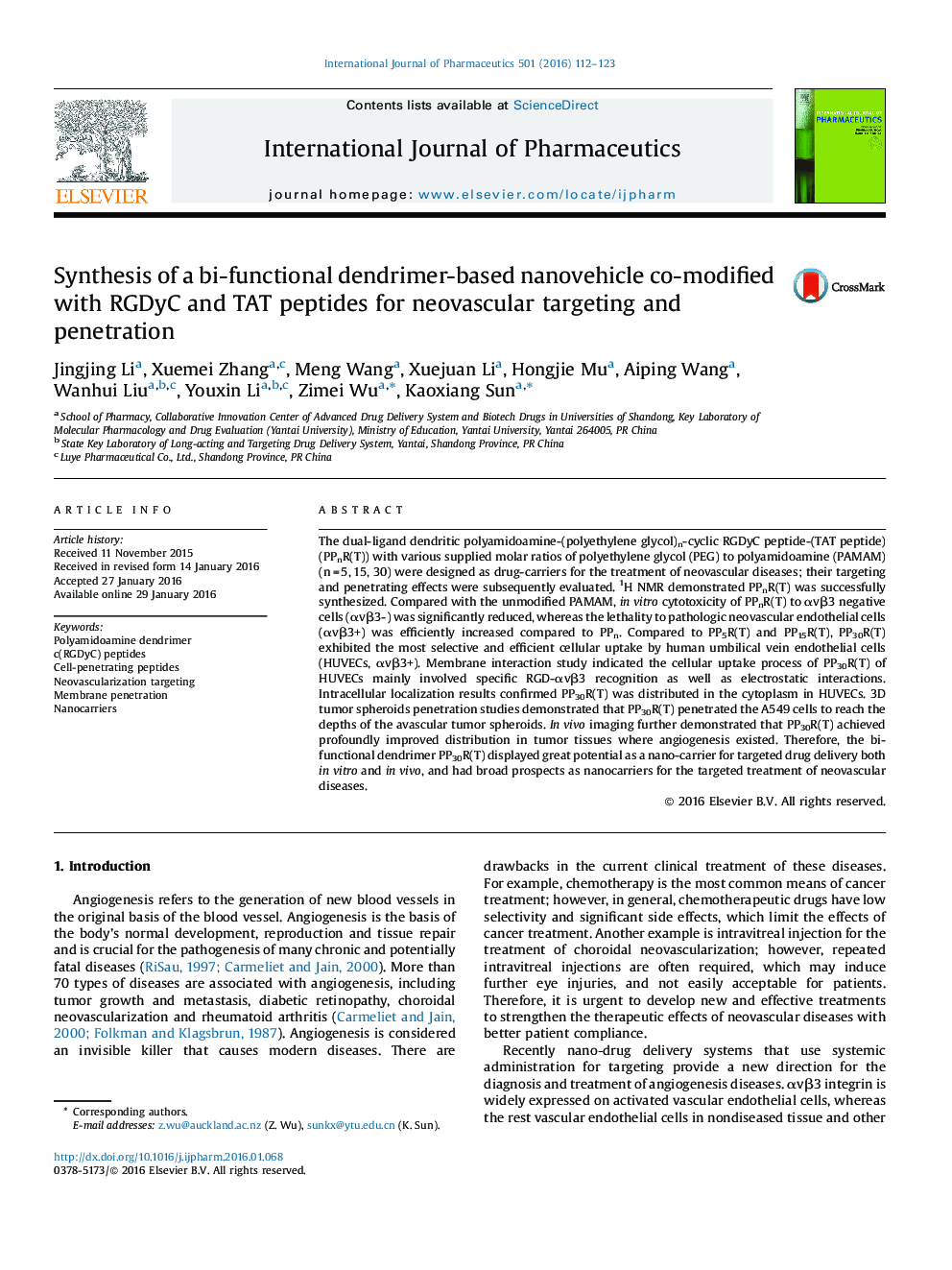| Article ID | Journal | Published Year | Pages | File Type |
|---|---|---|---|---|
| 2501100 | International Journal of Pharmaceutics | 2016 | 12 Pages |
The dual-ligand dendritic polyamidoamine-(polyethylene glycol)n-cyclic RGDyC peptide-(TAT peptide) (PPnR(T)) with various supplied molar ratios of polyethylene glycol (PEG) to polyamidoamine (PAMAM) (n = 5, 15, 30) were designed as drug-carriers for the treatment of neovascular diseases; their targeting and penetrating effects were subsequently evaluated. 1H NMR demonstrated PPnR(T) was successfully synthesized. Compared with the unmodified PAMAM, in vitro cytotoxicity of PPnR(T) to αvβ3 negative cells (αvβ3-) was significantly reduced, whereas the lethality to pathologic neovascular endothelial cells (αvβ3+) was efficiently increased compared to PPn. Compared to PP5R(T) and PP15R(T), PP30R(T) exhibited the most selective and efficient cellular uptake by human umbilical vein endothelial cells (HUVECs, αvβ3+). Membrane interaction study indicated the cellular uptake process of PP30R(T) of HUVECs mainly involved specific RGD-αvβ3 recognition as well as electrostatic interactions. Intracellular localization results confirmed PP30R(T) was distributed in the cytoplasm in HUVECs. 3D tumor spheroids penetration studies demonstrated that PP30R(T) penetrated the A549 cells to reach the depths of the avascular tumor spheroids. In vivo imaging further demonstrated that PP30R(T) achieved profoundly improved distribution in tumor tissues where angiogenesis existed. Therefore, the bi-functional dendrimer PP30R(T) displayed great potential as a nano-carrier for targeted drug delivery both in vitro and in vivo, and had broad prospects as nanocarriers for the targeted treatment of neovascular diseases.
Graphical abstractFigure optionsDownload full-size imageDownload high-quality image (113 K)Download as PowerPoint slide
